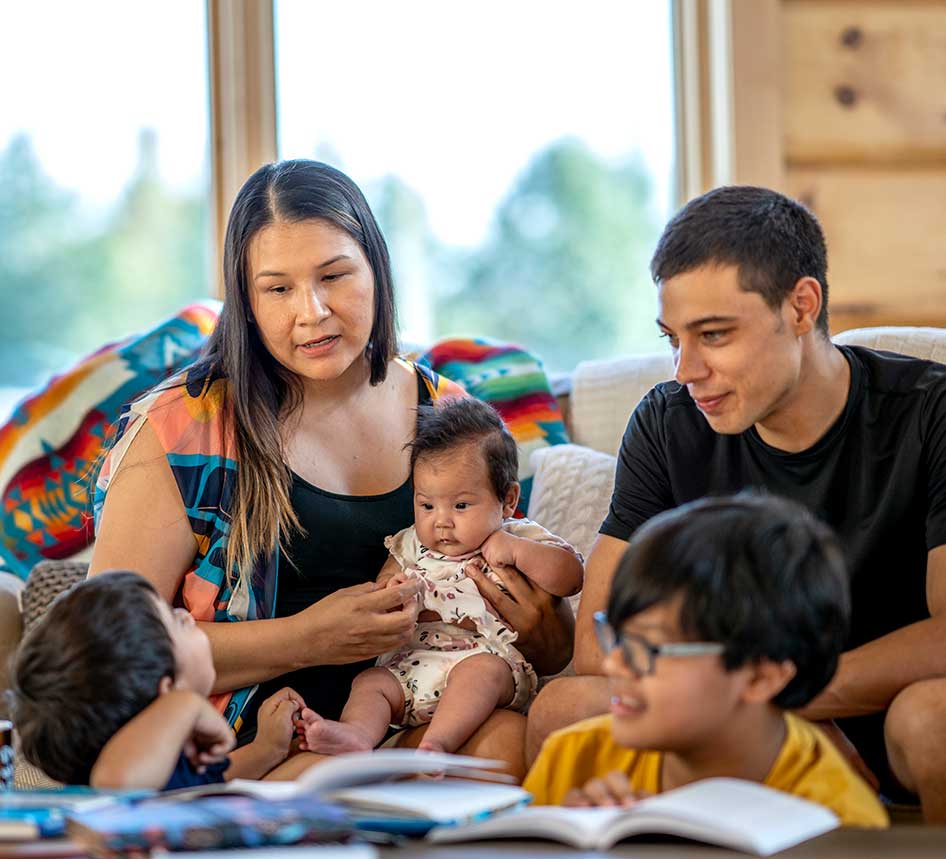
- April 12, 2022
- Language
Bilingual Homes
We often get referrals for clients in bilingual homes. These referrals lead to discussions about speech development for children when parents are bilingual and some misconceptions about bilingual homes, such as teaching children more than one language or what speech therapy can look like for bilingual children.
What are some of the advantages of bilingualism? First and foremost, it exposes children to multiple cultures and communities. That exposure gives the child more job opportunities when they grow up. From studies, we have also learned that bilingual children have been shown to have cognitive flexibility (1), and multilingualism has been shown to delay the onset of dementia (2).
It is important to note that learning multiple languages does not cause a language delay. Children with communication delays can learn more than one language. Specifically, autistic children have been shown to have similar language skills as their monolingual peers (3). In addition, bilingual Autistic children had greater interaction skills than their monolingual autistic peers (4).
We often observe children ‘code-mix’ — meaning switching between two languages, e.g., using a word from one language while the rest of the sentence is in a different language. This does not mean that the child has difficulty learning the two languages. Multilingual adults code-mix all the time when speaking with other multilingual people. Code mixing could also signify that the child hasn’t learned a specific word in both languages yet. For example, a child saying, “Je veux mes shoes!” may indicate that the child has not yet learned the word for “shoes” in French.
When we look at milestones, multilingual children achieve the same milestones as monolingual children. However, we might find that their vocabularies in each language are smaller than monolingual children. Still, when both languages are considered, multilingual children have the same size vocabularies as their peers or even bigger!
So, how exactly can we go about teaching a child more than one language? There is no one right way around it! It is beneficial for parents to speak their native language (i.e., the language they are most comfortable speaking) to give their child a rich language model. If your child can learn a language not commonly spoken in the community (e.g., Hindi, Cantonese), you may want to focus on supporting them in learning as much of this language as possible. It can be challenging to maintain a heritage language, especially as children go to school. Some families do ‘one person, one language’ or ‘one place, one language’ – while these can be helpful systems for some, they are not required! Try finding songs and books in your home/heritage language. You can also use books written in English (or with no words) and talk about them in your home language.
If you have any concerns about your child’s language, contact an SLP. Having a speech therapist that speaks your family’s home language is ideal but not always possible. We want to make sure that the home language is supported. In sessions, you will learn strategies to use with your child in your home language.
https://globalnews.ca/news/107105/bilingual-toddlers-have-edge-over-unilingual-kids-study/2) Paradis, J., Genesee, F., & Crago, M. (2011). Dual Language Development and Disorders: A handbook on bilingualism & second language learning. Baltimore, MD: Paul H. Brookes Publishing.
